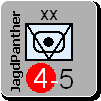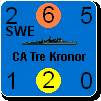Shannon V. OKeets
Posts: 22095
Joined: 5/19/2005
From: Honolulu, Hawaii
Status: offline

|
quote:
ORIGINAL: lomyrin
quote:
ORIGINAL: Shannon V. OKeets
quote:
ORIGINAL: Froonp
Some comments :
For the Advanced set, you activated CoiF and not Food in Flames.
Food in Flames was designed to give the CW the BP necessary to build the ASW unit they need now that (playing with CoiF) they have no more built-in ASW in their CP units.
So, you should activate Food in Flames if activating CoiF.
For the Advanced set, you chose not to activate Japanese Command Conflict.
This is a realism option that tries to put in the game the rivality that opposed the IJN and the IJA, and that led to large wastes of energy, and lots of battles. Have you seen "Letters fro Iwo Jima" that C Eastwood did ? It shows that pretty well. A WWII game without this option is not a WWII game, so I think that it should be activated in the hightest level of option choices.
For the Novice choice, you activate Blitz Bonus, and not for the 2 other sets of options ? Why ? Blitz options were designed for the play with the 2d10 CRT, so it is bizarre to include them in an 1d10 game, and not in the full chrome 2d10 one. I think that this choice should be reversed. BLitz Bonus should be activated for 2d10 play, and unactivated with 1d10 play.
For the Advanced set, you activate the In The Presence Of The Enemy that is in my opinion one of the worst options in the game, resulting in Japan spreading lone cruisers in the Pacific, just top make the TF-58 Armada slow down and unable to wreak havoc in the Japan home waters. If the option required that the blocking TF was at least half the size of the moving TF, but here as is, it is pretty much ridiculous (personal opinion).
On the other hand, you choose in the Advanced set not to activate the En route Interception option that gives a new layer of realism in the game, allowing to intercept long ranged air missions on their way, rather than only at their target. I would reverse this choice.
I'll reconsider Food in Flames to go with Convoy in Flames then.
Someone in a post above gave a real good reason for not using Japanese Command Conflict.
Blitz Bonus is not used with 2D10. They are mutually exclusive.
As for Enroute Interception and In the Presence of the Enemy, you are at the mercy of my preferences.
Blitz bonus when using the 2D10 tables is of enormous importance and certainly is used by almost all palyers.
Japanese command conflict when one considers all the new Chinese cities is not a desirable option in my mind.
Lars
Please compare the following.
====================
23.7 Blitz Bonus
This optional rule magnifies some of the effects of blitzkrieg warfare. Armor does better
in the open but all units do worse when attacking cities containing factories. Paratroops get an
added bonus. This optional rule cannot be used in combination with the 2D10 CRT optional
rule; they are mutually exclusive.
Note that this optional rule for Blitz Bonus is completely separate from choosing between
the Blitzkrieg and Assault tables. The standard rules discuss the effects of choosing the
Blitzkrieg table (sometimes referring to it as the Blitz table) and the optional rule for using the
2D10 land combat results table has a column labeled Blitz. Despite the similarity in words, this
Blitz Bonus optional rule is separate and distinct.
There are 4 changes to the combat calculations when the Blitz Bonus is in effect:
∙ 1 is subtracted for attacking a 2 or 3 factory stack.
∙ 1 is added to the die roll for each two attacking armor, mechanized, and HQ-A units conducting a blitzkrieg attack against a non-city clear or desert hex in fine weather.
∙ 1 is subtracted from the die roll per defending armor, mechanized, and HQ-A in a non- city clear or desert hex in fine weather.
∙ 1 is added to the die roll for each unit that paradrops (after air to air combat and anti aircraft fire, if any).
23.5 2D10 and Combat Results Table
This optional rule replaces the 1D10 (1 ten-sided die) land combat results table with the
2D10 (2 ten-side dice) land combat results table. The 2D10 is a more complex table in that it
provides for more modifiers to the dice roll and takes into account more variations in the combat
situation (e.g., terrain and units engaged effects). Besides using 2 dice and summing them to
determine the combat result, the 2D10 also converts the odds ratio into a dice roll modifier for
reading a column, rather than using the odds and the die roll as 2 indices into the CRT like the
1D10 CRT does.
The procedure for determining the modifiers, rolling the dice, etcetera, is not really
relevant to players of MWIF, since the program takes care of that for you. However, the players
should be aware of the effects of terrain, weather, unit types, odds ratio, and combat type, so they
can reasonably predict the outcome of an attack. Therefore, they are described below.
When using 2D10 optional rule, 2 dice are rolled and their values are added up. To that
sum are applied the modifiers, and the modified total is used to look up the combat result, either
on the Assault or the Blitz column of the 2D10 CRT.
The 2D10 table includes 2 new results: (1) the half disrupted, and (2) the extra loss to the
attacker in bad weather or terrain. The half disrupted result means that after the combat results
have been applied, with units retreated and/or advanced, half (rounding up) of the surviving
organized attackers remain organized, owner's choice. The other half become disorganized.
The extra loss in bad terrain and/or bad weather means the attacker takes more losses and
makes bad terrain even better for defense. However, the table is also slightly bloodier for the
defender too, so the net effect is heavier casualties all around.
Die Roll Modifications for the 2D10 CRT
∙ +1, when using the Blitzkrieg column, for each armor or mechanized unit (i.e., either corps/army or division, including HQ-A), but only if the weather is fine, the attack is into a non-city, clear or desert hex, and the unit is not attacking across a fortification.
∙ -2 for each defending armor or mechanized corps/army (including HQ-A) in a non-city, clear or desert terrain, but only during fine weather.
∙ -1 for each defending armor or mechanized division in a non-city, clear or desert terrain, but only during fine weather.
∙ -1 for each defending Anti-Tank and Anti-Air unit that has its combat factors in a pink or red circle (some of the latter do not), but only if attacked by at least one armor or mechanized unit (including HQ-A).
∙ +2 for each disorganized defending corps/army unit.
∙ +1 for each disorganized defending notional or division sized unit.
∙ Plus or minus half the reorganization value of supporting HQs (plus for the attacking HQ and minus for the defending HQ). No die roll is required for HQ support. When using the 2D10 CRT, HQ's always provide support if the player commits them to do so.
∙ -1 for each co-operating major power attacking (after the first).
∙ -4 for attacking in jungle. But +1 for each white print Japanese, Australian, or US marine attacking a jungle hex.
∙ +1 for each paradropping unit that actually lands in the hex.
∙ +2 for non-territorials attacking territorials.
∙ -2 for territorials attacking non-territorials.
∙ -2 for rain.
∙ -4 for storm.
∙ -4 for snow. But +1 for each attacking and -2 for each defending winterized unit. Winterized units are Ski, Mountain, Swedish, Finnish, Norwegian, and Russian white print units.
∙ -6 for blizzard. But +1 for each attacking and -2 for each defending winterized unit.
∙ -1 for city and -1 for each preexisting factory in a city. But +1 for an HQ attacking a city,
∙ +1 for each engineer combat factor attacking a city, and -1 for each engineer combat factor defending in a city. Furthermore, the city modifiers can never be greater than 0.
∙ Attacking bonuses are halved (except for HQ support) when the combat factors of the attacking units are halved (e.g., when attacking across a river).
_____________________________
Steve
Perfection is an elusive goal.
|
 Printable Version
Printable Version









 wow would be GREAT)
wow would be GREAT)


 ).
). 
 New Messages
New Messages No New Messages
No New Messages Hot Topic w/ New Messages
Hot Topic w/ New Messages Hot Topic w/o New Messages
Hot Topic w/o New Messages Locked w/ New Messages
Locked w/ New Messages Locked w/o New Messages
Locked w/o New Messages Post New Thread
Post New Thread